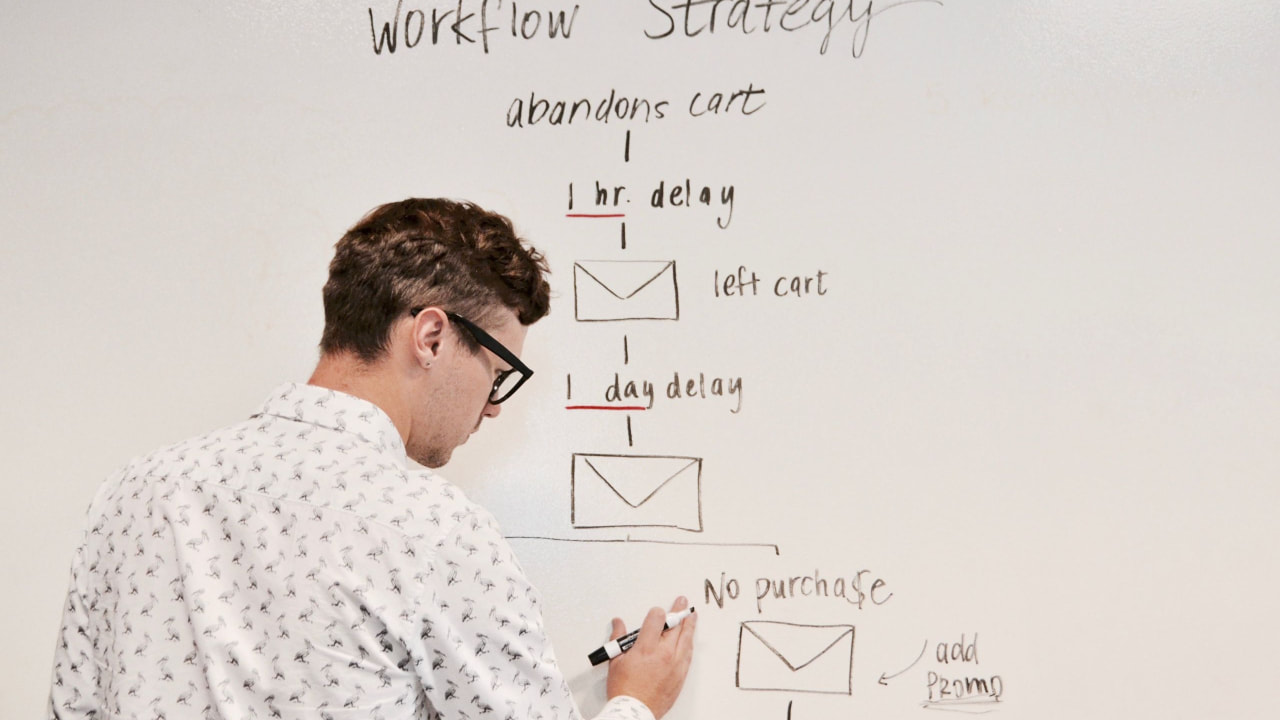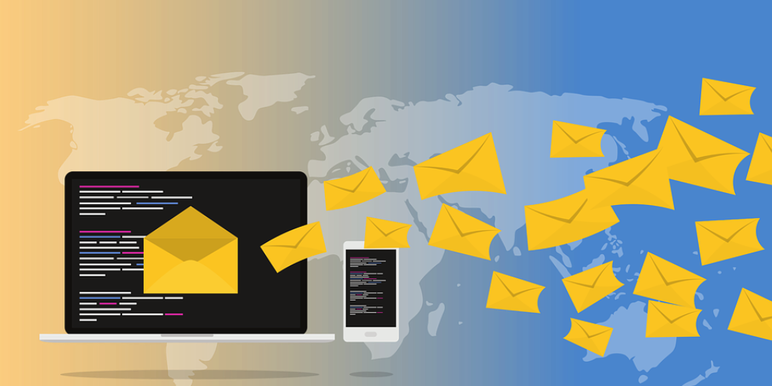|
In this blog post, we discuss the importance of lead generation strategies. If you have any questions or need any help with your lead generation strategy then get in touch. How To Generate Leads Using Lead Generation StrategiesLead generation is frequently misunderstood and under-valued when it comes to growing a business. The term “lead generation” doesn’t help as it’s not clear to many business owners and start-ups as to what exactly it means. In this blog post, we go through what a lead generation strategy is, and how you can use lead generation to increase your sales. If you would like help with your lead generation then get in touch for a free consultation to see how we can help. What Is a Lead Generation Strategy?A lead generation strategy is a marketing and sales technique used to generate leads for a product or service. It’s based on the premise that to get sales, you first need to have a number of prospects (also known as leads) that will buy from you. Finding prospects is, as the phrase goes “generating leads”. There are varying levels of leads such as cold leads (unlikely to buy or not enough information to know their situation), warm leads and hot leads (ready to buy or are certainly expressing a high level of interest in what you offer). A lead generation strategy involves a plan (and one or more sales and marketing campaigns) to generate leads. Lead generation strategies are often effective because they target people who want what you have but don't know about it yet. Lead Generation Statistics and Fast FactsBefore we get into more detail on how to generate leads, here are some quick facts to consider: - In the United States alone, there are over 50 billion dollars spent annually on lead generation. - The average cost of a qualified lead is $25. - The average conversion rate for a qualified lead is 10%. - Lead generation can be done through many different sources, such as social media and email marketing campaigns. Qualifying Your LeadsA qualified lead is one that you believe is looking to potentially buy from you. If you have 200 email addresses of people who could buy your services but no other information then these are cold - or unqualified leads. If, however, you establish contact with those people in whatever way, you can find out how serious they are about buying. Some of those leads can be removed from your list, while others can be considered as qualified leads. A lead is qualified when they meet your criteria. Make sure you have a set list of qualifications before generating leads because it will be easier to turn them down if they don't qualify than after you have invested time and effort into them. Using PPC to Generate LeadsLead generation strategies are the most effective way for companies to gain new business. There are many different ways that a company can generate leads, but one of the best is by using Pay Per Click (PPC). PPC, also known as pay-per-click advertising is a form of internet marketing that involves the advertiser paying for each click on their ad by potential. A Google Ads campaign, for example, can be used to promote a product or service when someone is actively searching for that service. A hotel in Manchester, for example, might set up a Google Ads campaign so that the advert for the hotel appears when someone searches for “hotels in Manchester”. Using Email to Generate LeadsEmail Marketing can play a critical role in the lead generation process. It can either be used to generate leads or by nurturing prospects and building up the relationship with them so that they will go from being a lead to becoming a paying customer. Lead Generation Strategies can be used to generate leads for a variety of businesses, and they are especially useful when you're just starting out because it's one of the cheapest ways to get customers quickly. Different channels for generating leadsLeads can be generated by many different channels, including sales leads from trade shows and other events, advertising campaigns (such as PPC campaigns) or public relations efforts that attract large numbers of potential customers, and even from social media marketing. Leads can also be generated through methods such as cold calling and direct mail. Cold-calling can be difficult for many businesses for various reasons and although it’s considered by many to be outdated compared to digital marketing, it can still be effective for many industries. How Much Does Lead Generation Cost?Lead generation costs are based on the type of lead that is being generated, how many leads are desired and what methods will be employed to generate them. For example, email marketing can cost as little as £1 per email and the price of each lead will depend on various factors such as the type of products or services, the industry and the channels that are used to reach the target audience. There’s no definitive answer to the question “How much does lead generation cost?”, but if you would like to know more about measuring Return on Investment (ROI) and deciding on the most effective lead generation campaign, then get in touch. We would be happy to help. The integrated approachThe ultimate lead generation strategy is one that’s tried and tested to get results and is set up as a process that’s automated as much as possible. To achieve this requires an understanding of what will work most effectively as well as an integration of marketing tools such as email marketing, landing pages for lead generation and a follow-up process for contacting hot leads.
At Think Twice Marketing, we work with businesses to set up their lead generation process. To find out more and to grab your free consultation, get in touch today. In this blog post, we discuss what an autoresponder is and how you can use it in your marketing. For more information about email marketing and autoresponders, contact us today. Automating marketing with autorespondersAutomation can play an important part in the success of any growing business. The less time you devote to doing small redundant tasks, the more time you will have to devote to strategic and business development activities that require your skills and expertise. Putting an online business on autopilot is fairly easy to do, and much of it can be done by simply using autoresponders to automate simple tasks for you. What is an autoresponder?An autoresponder is software that’s used to automatically respond to customer enquiries. It can be used to set up a series of pre-determined responses, or it can be programmed to respond in a more human-like manner. This software usually either has the ability to send out automated emails or is integrated with email marketing software. Autoresponders are mostly used in marketing for marketing campaigns, or customer support in order to handle large volumes of support enquiries. In this blog post, we are focusing primarily on how an autoresponder can be used to achieve better results in your marketing. Autoresponders in eCommerceIf you run an eCommerce business then an autoresponder is a great way to help nurture the prospect and, if necessary, nudge them back toward making a purchase. Here are some examples of how an autoresponder can be used in eCommerce: Shopping cart abandonment: This is a common issue in online eCommerce. If a website visitor has entered their email address (and some other details) but they haven’t made a purchase on what’s in their basket or shopping cart then you can use an autoresponder to remind them to check out. You can also couple this with a special offer to prompt them further. You viewed this campaign: Similar to the Shopping cart abandonment campaign, you can send an email promoting a product that someone has viewed (or alternatives). If the user is signed in and views a product, you can set up an autoresponder to say “hey, great choice. We notice you didn’t add it to your basket so here’s a button to do that in case you forgot”. Short blast and lead generation campaignsTwo other great ways to use autoresponders are in short one-off campaigns and in lead generation campaigns. A short blast campaign comprises of a series of emails over a short period of time. A business offering a productivity app, for example, could offer a 5-day training on how to improve business productivity with a new email being sent out on a daily basis. When a prospect signs up, they will receive the various educational emails in the order and according to the timing set up in the autoresponder. With a lead generation campaign, a business can offer a free eBook or some other form of “lead magnet”. When a prospect enters their email address on the website to receive the free eBook, they will receive a copy of the book by email, followed by a series of emails over time with further tips, advice and offers. A short blast campaign and Lead generation campaign can be the same thing depending on what you are offering and how the campaign is planned out. Using Autoresponders wiselyAutoresponders are great for businesses that want to grow, but they must be used with caution. Promoting products for sale is one of the most popular uses of autoresponders in online marketing but it can annoy or alienate potential customers if it isn’t done correctly. Sending too many emails or being too promotional is more likely to prompt the reader to hit the subscribe rather than the buy button. What Autoresponder should you use?There are many Autoresponder services available that can be found by searching on Google. Many Autoresponder services offer a free limited service but make sure to check out the features first as well as the upgrade pricing. Once you start using an autoresponder, it can be a lot of extra work if you decide later on to move your data and processes over to a different solution. Aweber, MailChimp and GetResponse are just a few examples of apps that offer autoresponder functionality. A fuller list of email marketing solutions, as well as tips for setting up an autoresponder, are included in How to create a successful email marketing campaign. Need help with your email marketing?If you need help with your email marketing and setting up an autoresponder, get in touch. We would be delighted to have a quick chat with you to understand your requirements and to see if we can help.
Call us today. Don't underestimate the power of headlines in your marketing. Make sure not to lose out on potential customers with this blog post about the importance of titles or heading in marketing campaigns! How important is a title or heading in a marketing campaign?How much time do you spend on the wording for your title? Whether it's email marketing, blog writing or any other form of marketing where a title or heading is required many marketers and business owners underestimate the importance of the title. Consider this...
At some point in the past you may have written a blog post or an email to send out to your distribution list and very quickly added the title. If you have then you aren't alone but it's one of the worst things you can do. If the title doesn't capture the attention of the reader then they aren't going to read the rest of the content. In today's world, we are busy people; constantly bombarded with information such as emails, notifications and bits of information we see around us such as ads on the TV or people talking. When it comes to grabbing the readers attention, your campaign is just one of many activities trying to grab and maintain their attention. If you haven't succeeded then those previous minutes or hours you have spent writing the body of the content is wasted. The content won't get read. The purpose of a title? The purpose of the title is to tell the reader what the main content is about, right? Actually this is only part of the answer. More importantly, the purpose is to grab the readers attention and make them want to read more. If you fail in the last part then the marketing campaign will be less effective. In email marketing, typically less than 30% of subscribers will open an email, fewer will read more than the first couple of lines and even fewer will read the whole email. The subject heading should entice the reader to open the email. The email title should entice the reader to want to read the main content and the first few lines of content should entice the reader to want to read the rest. The same principle applies for blog posts. An accountant, for example, might write a newsletter which includes 3 great tips for reducing the tax a business has to pay. When the email arrives in your inbox and you see the title, which one of these are you, as a business owner likely to open? Summer Newsletter 2019 or 3 Proven Ways To Pay Less Tax In Your Business The sight of the word 'newsletter' makes me want to immediately delete the email or at best, leave it in my inbox to read later (which in reality I will never come back to). Time well spent I've seen an argument for spending more time on the title of a blog post or email campaign than on the rest of the content. I'm not convinced by this as some campaigns can take hours to write and spending several hours deciding on a title doesn't make sense. Without doubt, an effective, well written title is crucial - and arguably more important than the main body of content but with experience it shouldn't take that long to come up with a powerful headline. Just spending 10-15 minutes playing around with different wording may be enough time to find the perfect headline. Here are some headlines types to consider: - Ask a question that will get the reader thinking and prompt them to read further such as 'Are you struggling to find time to get fit' (if you are a personal fitness instructor reaching out to your audience). - Start with 'How to' or 'Discover why' so the reader is clear that the content will explain the answer. - Make a single bold statement that the reader wants to find out more about. This style is more inline with newspapers who often do headlines such as 'Boy saves lives' or 'Millions suffering'... you get the idea. The use of power words are also important and this is discussed in my book 'How to create a successful email marketing campaign'. One element we haven't discussed in this blog is the importance of effective headings in blog posts from an SEO perspective. Titles should include keywords that are used as part of an SEO campaign to get to the top of Google. You can find out more about this in my blog post How to SEO Your Blog Posts. If you would like more help writing your marketing campaigns including writing effective titles then contact Think Twice Marketing. At Think Twice Marketing, we often get contacted and asked "we need help with our marketing, can you post on Facebook and send out some emails for us?". And while we are happy to help, it does highlight a worrying trend that businesses have come to believe that marketing is mostly or solely about the online channels that can be used. For marketing to be a succes, however, it's a lot more than that! Why marketing isn't just about social media and email marketingWhen I graduated in International Business, a course that was very marketing focused, I went on to work for larger corporations in what could now be labelled traditional marketing. I accept that a lot has changed since then but what I learned and performed in terms of marketing included:
- Developing products and solutions that met the benefits of the customer - Understanding customer needs and how the customers' mind works - Integrating sales and marketing activities as a single unit - Pricing a product inline with it's perceived value and in a way that maximises profit - and much more! The average social media marketer might not, for example, understand how the whole lead generation process should look, how power words such as 'now' or 'limited' make a difference, what the best colour is for a call to action button (orange is usually best) or that black conveys professionalism in artwork while blue conveys trust. That's not to say that the marketer isn't smart, it's that focus is on how social media works and how content should be formatted and scheduled. Marketing has required skills in many areas, so a video agency or an SEO expert isn't expected to understand how to develop a marketing strategy for a customer or why customers behave the way they do. My book Psychology in Marketing and Sales discusses many other elements that marketing involves including the customer buyer journey, why we decide to buy a specific product or service and how we are influenced by different ways in which a product or service is positioned. As a business grows, think twice about who you hire and how they can help. If you are serious about business growth then an expert in video, social media or email marketing (or SEO) should be considered, but having a marketing manager who looks at the bigger picture and brings the many marketing elements together should be a top priority! |
written byThe opinions in these blog posts are those of marketing expert and book author Darren Hignett. Categories
All
Archives
October 2022
|
|
Open 9 am - 5 pm
Tel: 07769 331 247 |







 RSS Feed
RSS Feed